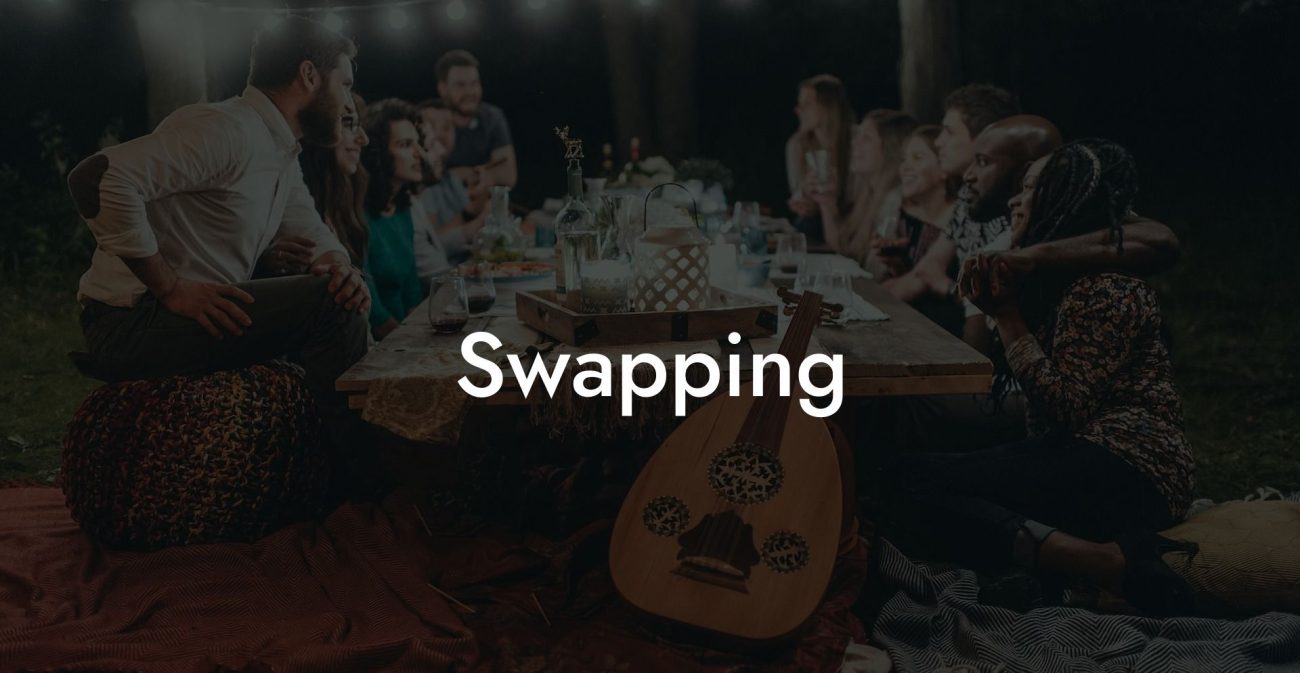Boundary

Picture this: you’re at a wild party where the conversation shifts from the latest viral cat video to the secrets of successful non-monogamous relationships, one hot topic being boundaries. Yes, boundaries! Those invisible lines that keep our love lives as organized as a well-planned pizza delivery. In the world of ethical non monogamy, boundaries are like the GPS of your relationships, they help you avoid getting lost, crashing into each other’s personal space, or ending up at an awkward dead-end. Buckle up, because we’re about to explore what boundaries really mean, why they’re essential, and how to set them without feeling like you’re drawing the line in the sand with a giant marker.
Quick Links to Useful Sections
- The Ethical Non Monogamy Term: Boundary
- Defining Boundaries in Ethical Non monogamy
- Why Boundaries Matter in Ethical Non Monogamy
- A Quick Video Explanation
- Types of Boundaries in Ethical Non Monogamy
- Emotional Boundaries
- Physical Boundaries
- Time Boundaries
- Digital and Communication Boundaries
- Practical Strategies for Setting and Maintaining Boundaries
- Start With Honest Self-Reflection
- Communicate Openly With All Partners
- Create a Written Agreement
- Regularly Revisit and Revise Boundaries
- Use Digital Tools for Organization
- Seek Professional Guidance if Needed
- The Impact of Boundaries on Relationship Dynamics
- Fostering Trust and Security
- Enhancing Communication
- Promoting Personal Growth
- Preventing Conflict
- Frequently Asked Questions (FAQ)
The Ethical Non Monogamy Term: Boundary
Defining Boundaries in Ethical Non monogamy
In ethical non monogamy, boundaries refer to the clearly defined limits and guidelines that partners establish to protect their emotional and physical well-being. These rules aren’t about restricting freedom, they’re about creating a safe, respectful space where everyone’s needs are met. Think of boundaries as the traffic signals of your relationship network: they tell you when to go, when to slow down, and when to stop to avoid collisions.
At its core, a boundary is a mutual agreement that helps all parties understand what is acceptable and what isn’t in terms of behavior, emotional involvement, and physical intimacy. Whether it’s deciding how much time to spend with each partner, sharing details of external encounters, or setting limits on specific activities, boundaries serve as the foundation of trust and clarity in ethical non monogamy.
Why Boundaries Matter in Ethical Non Monogamy
Without boundaries, non monogamous relationships can easily descend into chaos, imagine trying to coordinate a group hug without knowing who’s in or out! Boundaries help ensure that everyone feels respected, valued, and secure. They prevent misunderstandings, reduce the likelihood of hurt feelings, and enable honest communication. In essence, boundaries create a framework that lets love flourish without the risk of emotional fender benders.
Here are a few reasons why boundaries are vital:
- Emotional Safety: They protect your feelings and ensure that everyone is on the same page, reducing anxiety and fostering trust.
- Clear Expectations: Boundaries set expectations for behavior, making it easier to navigate complex relationship dynamics.
- Conflict Prevention: By establishing what is and isn’t acceptable, boundaries can prevent misunderstandings and minimize conflicts.
- Personal Autonomy: They allow individuals to maintain their personal space and identity, even within a network of interconnected relationships.
A Quick Video Explanation

Types of Boundaries in Ethical Non Monogamy
Emotional Boundaries
Emotional boundaries help define how much emotional energy and intimacy you’re willing to share with each partner. These boundaries are about ensuring that while you may care deeply for several people, your core emotional needs are met without feeling overwhelmed.
- Primary vs. Secondary Distinctions: Deciding which relationships receive deeper emotional investment versus those that remain more casual.
- Communication Depth: Agreeing on how much detail to share about external relationships to avoid emotional overload or misinterpretation.
Physical Boundaries
Physical boundaries focus on how and when physical intimacy occurs with partners outside your core relationship. These guidelines might cover issues such as safe sexual practices, the frequency of external encounters, or specific behaviors that are off-limits.
- Safe Practices: Clear rules on using protection and regular health check-ups to ensure everyone’s well-being.
- Frequency Limits: Deciding how often external sexual encounters are acceptable, so that your primary relationship remains prioritized.
Time Boundaries
Time boundaries deal with how you allocate your time among various partners. In ethical non monogamy, where multiple relationships can easily overlap, establishing a time framework is crucial.
- Scheduling: Using calendars or planning tools to ensure quality time is dedicated to each relationship.
- Priority Setting: Determining which relationships need more regular engagement and which can be more flexible.
Digital and Communication Boundaries
In today’s digital age, boundaries around online communication are more important than ever. These boundaries define what is shared publicly, what is kept private, and how much detail about external relationships is communicated to all parties.
- Privacy Guidelines: Agreeing on what information is shared on social media or within group chats.
- Disclosure Levels: Setting expectations for how much detail about external encounters should be communicated to your primary partner.
Practical Strategies for Setting and Maintaining Boundaries
Start With Honest Self-Reflection
The first step in setting effective boundaries is to understand your own needs, values, and limits. Ask yourself:
- What makes me feel secure and respected in my relationships?
- Where do I need personal space or time?
- What are my non-negotiables regarding emotional and physical intimacy?
Write down your thoughts to create a clear picture of what you need from your relationships. This self-awareness is the foundation upon which you can build your boundary agreements.
Communicate Openly With All Partners
Once you have a clear understanding of your personal boundaries, it’s time to share them with your partners. Here’s how to approach the conversation:
- Be Transparent: Explain your needs and expectations clearly, using “I” statements to avoid sounding accusatory.
- Encourage Feedback: Invite your partners to share their boundaries and discuss how you can meet each other’s needs.
- Negotiate Together: Work collaboratively to set boundaries that feel fair and respectful to everyone involved.
Create a Written Agreement
To avoid future misunderstandings, consider creating a written or digital boundary agreement. This document should outline:
- The specific boundaries for emotional, physical, time, and digital interactions.
- Any agreed-upon rules regarding safe practices, frequency of external encounters, and levels of disclosure.
- A schedule for regular reviews and updates to ensure the agreement evolves as your relationships do.
Regularly Revisit and Revise Boundaries
Boundaries are not set in stone. As relationships evolve, so do personal needs and circumstances. Make it a habit to:
- Schedule periodic check-ins specifically focused on reviewing boundaries.
- Adjust the agreement as necessary based on new experiences, feedback, or changes in your relationship dynamics.
- Celebrate successes and discuss any areas of discomfort openly to continuously improve the arrangement.
Use Digital Tools for Organization
In our busy digital world, shared calendars, messaging apps, and digital notes can help keep everyone on the same page. Tools like Google Calendar or Trello can be used to schedule check-ins, track commitments, and document agreed-upon boundaries.
Seek Professional Guidance if Needed
If you find that setting or maintaining boundaries is particularly challenging, consider seeking help from a therapist or counselor experienced in ethical non monogamy. Professional guidance can provide personalized strategies and tools to navigate complex emotions and ensure that everyone feels secure.
The Impact of Boundaries on Relationship Dynamics
Fostering Trust and Security
Effective boundaries create an environment of trust, where each partner knows what to expect and feels secure in the relationship. This trust is essential for fostering emotional intimacy and reducing anxiety or jealousy.
Enhancing Communication
Regularly discussing boundaries encourages open dialogue. This not only helps in addressing issues before they escalate but also strengthens the overall communication between partners.
Promoting Personal Growth
Boundaries allow individuals to maintain their personal autonomy while being part of a collective relationship network. They empower each partner to explore their own interests and needs without compromising the integrity of the group.
Preventing Conflict
Clear, agreed-upon boundaries serve as a roadmap for behavior, minimizing misunderstandings and reducing the risk of conflict. When everyone knows the rules, it’s easier to address issues constructively.
Frequently Asked Questions (FAQ)
1. What are boundaries in ethical non monogamy?
Boundaries in ethical non monogamy are the mutually agreed-upon limits and guidelines that help protect the emotional and physical well-being of all partners involved in a non-monogamous relationship.
2. Why are boundaries important in non monogamous relationships?
Boundaries ensure that everyone’s needs are met, prevent misunderstandings, and create a safe environment where trust and transparency can flourish.
3. What types of boundaries should be established?
Key boundaries include emotional, physical, time, and digital boundaries. These cover how much emotional intimacy is shared, the rules for sexual encounters, how time is allocated, and what details are shared online.
4. How do I know what my personal boundaries are?
Self-reflection is essential. Consider what makes you feel safe and respected, what you need in a relationship, and where you need personal space. Writing these thoughts down can help clarify your boundaries.
5. How should I communicate my boundaries to my partners?
Open, honest communication is key. Use “I” statements to express your needs and invite your partners to share theirs. Regular discussions and a collaborative approach to setting boundaries can ensure everyone is on the same page.
6. What should a written boundary agreement include?
A written boundary agreement should detail your emotional, physical, time, and digital boundaries, specify rules regarding safe practices, and outline a schedule for regular reviews and updates.
7. How often should boundaries be revisited?
Boundaries should be reviewed periodically, ideally every few months or whenever there are significant changes in your relationship, to ensure they continue to meet everyone’s needs.
8. What digital tools can help manage boundaries?
Tools like shared calendars, messaging apps, or digital note-taking platforms (e.g., Google Calendar, Trello) can help coordinate schedules, document agreements, and ensure ongoing transparency.
9. Can professional help assist in setting boundaries?
Yes, therapists or counselors who specialize in ethical non monogamy can provide valuable strategies and tools to help you set and maintain healthy boundaries.
10. What benefits do clear boundaries offer?
Clear boundaries foster trust, enhance communication, promote personal autonomy, prevent conflicts, and create a safe, respectful environment for all partners.
11. How do boundaries affect emotional intimacy?
Well-defined boundaries ensure that each partner feels secure and respected, which can deepen emotional intimacy and create a strong foundation for trust.
12. What challenges might arise if boundaries are not maintained?
Without clear boundaries, misunderstandings, hurt feelings, and conflicts are more likely to occur. This can lead to emotional insecurity and damage trust within the relationship.
Resources and Community Support: Your Next Steps
- The Ethical Slut by Dossie Easton & Janet Hardy – A groundbreaking book offering insights into ethical non monogamy and strategies for setting healthy relationship boundaries.
- More Than Two by Franklin Veaux & Eve Rickert – An extensive guide providing practical advice on managing multiple relationships and establishing clear boundaries.
- Podcasts: Tune in to Multiamory and Polyamory Weekly for engaging discussions on relationship dynamics and boundary setting.
- Online Communities: Join forums like r/polyamory to share experiences, seek advice, and connect with others.
- Workshops and Webinars: Attend events on relationship psychology and ethical non monogamy to expand your understanding and build a supportive network.
By exploring these resources and applying the practical strategies outlined in this guide, you can develop a vibrant, informed understanding of boundaries within ethical non monogamy. Embrace open dialogue, continuous learning, and self-reflection as you create a relationship dynamic that honors your needs and respects those of your partners.
Lost & confused by all of the terms, types and seemingly made up 3 letter acronyms?? We've got you. Check out our Ethnical Non-Monogamy Dictionary >>
Useful Interruption: Not sure which relationship vibe fits you best? Take our Relationship Test, it’ll give you the real insight into your natural relationship style. Then, dive into our binge-worthy guides (from the tried-and-true to the “wait, that’s a thing?”) and find the perfect relationship type for your life:
- Monogamy
- Open Relationships
- Ethical Non-Monogamy
- Solo Polyamory
- Non-Hierarchical Polyamory
- Hierarchical Polyamory
- Relationship Anarchy
- Swinging
Now back to the main article but yeah take the test...












